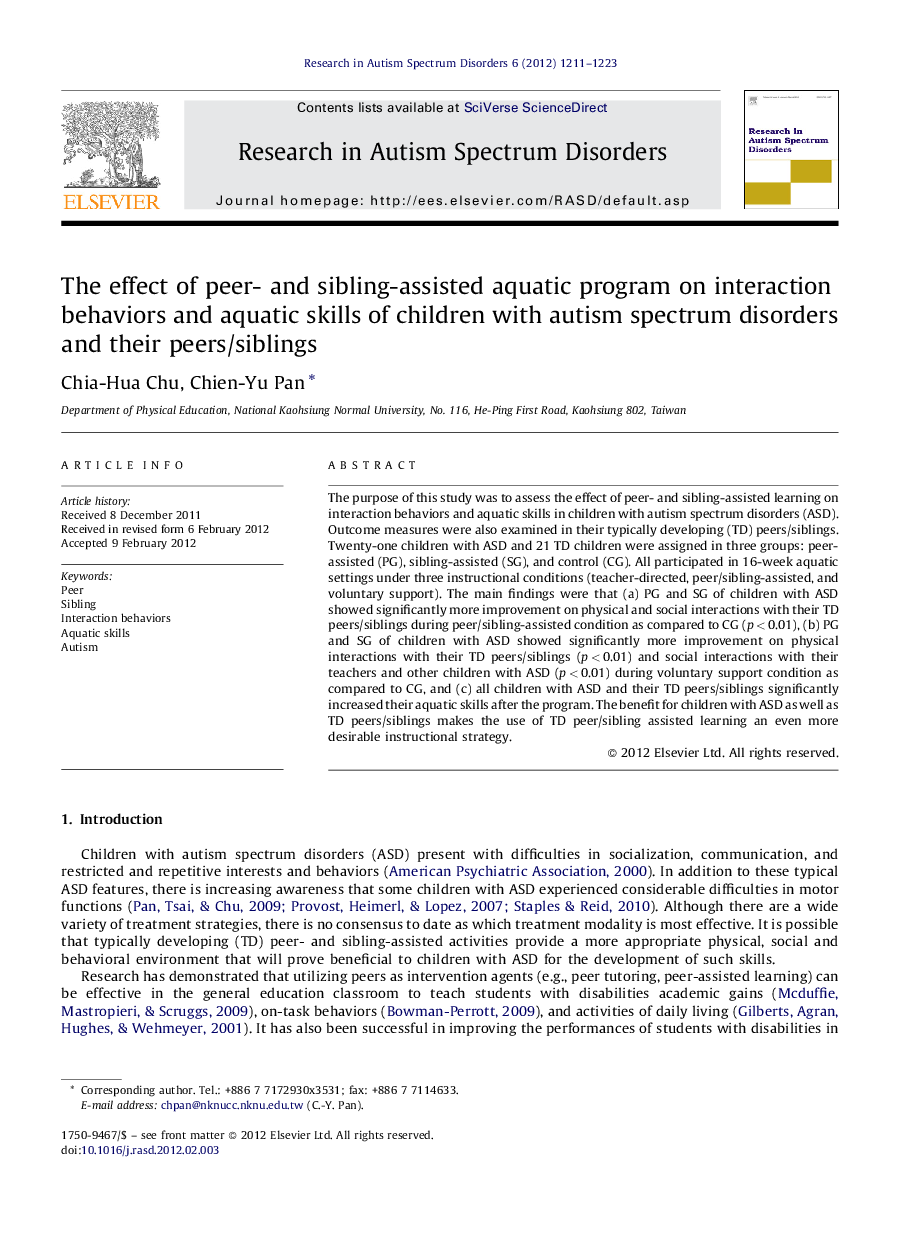| Article ID | Journal | Published Year | Pages | File Type |
|---|---|---|---|---|
| 370636 | Research in Autism Spectrum Disorders | 2012 | 13 Pages |
The purpose of this study was to assess the effect of peer- and sibling-assisted learning on interaction behaviors and aquatic skills in children with autism spectrum disorders (ASD). Outcome measures were also examined in their typically developing (TD) peers/siblings. Twenty-one children with ASD and 21 TD children were assigned in three groups: peer-assisted (PG), sibling-assisted (SG), and control (CG). All participated in 16-week aquatic settings under three instructional conditions (teacher-directed, peer/sibling-assisted, and voluntary support). The main findings were that (a) PG and SG of children with ASD showed significantly more improvement on physical and social interactions with their TD peers/siblings during peer/sibling-assisted condition as compared to CG (p < 0.01), (b) PG and SG of children with ASD showed significantly more improvement on physical interactions with their TD peers/siblings (p < 0.01) and social interactions with their teachers and other children with ASD (p < 0.01) during voluntary support condition as compared to CG, and (c) all children with ASD and their TD peers/siblings significantly increased their aquatic skills after the program. The benefit for children with ASD as well as TD peers/siblings makes the use of TD peer/sibling assisted learning an even more desirable instructional strategy.
► Improved aquatic skills were found for all groups of children after the program. ► Peer/sibling-assisted groups of children with ASD increased interaction behaviors. ► Benefits of using peer/sibling assisted techniques were observed for all children.
